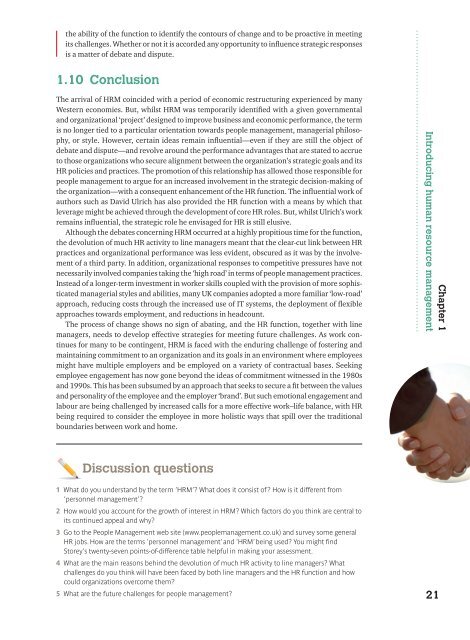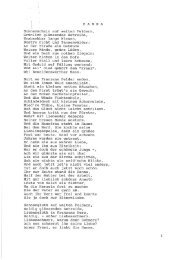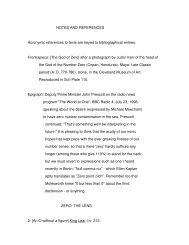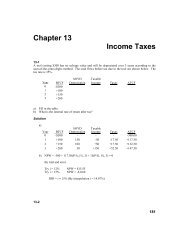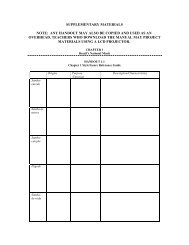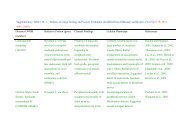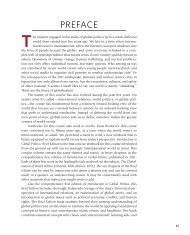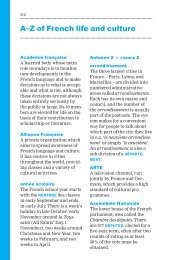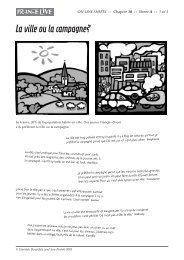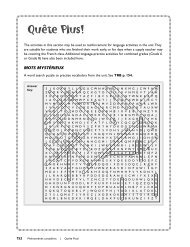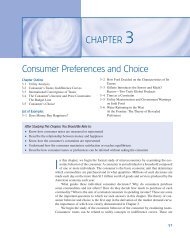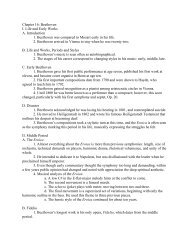Human Resource Management in Context
Human Resource Management in Context
Human Resource Management in Context
You also want an ePaper? Increase the reach of your titles
YUMPU automatically turns print PDFs into web optimized ePapers that Google loves.
the ability of the function to identify the contours of change and to be proactive <strong>in</strong> meet<strong>in</strong>g<br />
its challenges. Whether or not it is accorded any opportunity to <strong>in</strong>fl uence strategic responses<br />
is a matter of debate and dispute.<br />
1.10 Conclusion<br />
The arrival of HRM co<strong>in</strong>cided with a period of economic restructur<strong>in</strong>g experienced by many<br />
Western economies. But, whilst HRM was temporarily identifi ed with a given governmental<br />
and organizational ‘project’ designed to improve bus<strong>in</strong>ess and economic performance, the term<br />
is no longer tied to a particular orientation towards people management, managerial philosophy,<br />
or style. However, certa<strong>in</strong> ideas rema<strong>in</strong> <strong>in</strong>fl uential—even if they are still the object of<br />
debate and dispute—and revolve around the performance advantages that are stated to accrue<br />
to those organizations who secure alignment between the organization’s strategic goals and its<br />
HR policies and practices. The promotion of this relationship has allowed those responsible for<br />
people management to argue for an <strong>in</strong>creased <strong>in</strong>volvement <strong>in</strong> the strategic decision-mak<strong>in</strong>g of<br />
the organization—with a consequent enhancement of the HR function. The <strong>in</strong>fl uential work of<br />
authors such as David Ulrich has also provided the HR function with a means by which that<br />
leverage might be achieved through the development of core HR roles. But, whilst Ulrich’s work<br />
rema<strong>in</strong>s <strong>in</strong>fl uential, the strategic role he envisaged for HR is still elusive.<br />
Although the debates concern<strong>in</strong>g HRM occurred at a highly propitious time for the function,<br />
the devolution of much HR activity to l<strong>in</strong>e managers meant that the clear-cut l<strong>in</strong>k between HR<br />
practices and organizational performance was less evident, obscured as it was by the <strong>in</strong>volvement<br />
of a third party. In addition, organizational responses to competitive pressures have not<br />
necessarily <strong>in</strong>volved companies tak<strong>in</strong>g the ‘high road’ <strong>in</strong> terms of people management practices.<br />
Instead of a longer-term <strong>in</strong>vestment <strong>in</strong> worker skills coupled with the provision of more sophisticated<br />
managerial styles and abilities, many UK companies adopted a more familiar ‘low-road’<br />
approach, reduc<strong>in</strong>g costs through the <strong>in</strong>creased use of IT systems, the deployment of fl exible<br />
approaches towards employment, and reductions <strong>in</strong> headcount.<br />
The process of change shows no sign of abat<strong>in</strong>g, and the HR function, together with l<strong>in</strong>e<br />
managers, needs to develop eff ective strategies for meet<strong>in</strong>g future challenges. As work cont<strong>in</strong>ues<br />
for many to be cont<strong>in</strong>gent, HRM is faced with the endur<strong>in</strong>g challenge of foster<strong>in</strong>g and<br />
ma<strong>in</strong>ta<strong>in</strong><strong>in</strong>g commitment to an organization and its goals <strong>in</strong> an environment where employees<br />
might have multiple employers and be employed on a variety of contractual bases. Seek<strong>in</strong>g<br />
employee engagement has now gone beyond the ideas of commitment witnessed <strong>in</strong> the 1980s<br />
and 1990s. This has been subsumed by an approach that seeks to secure a fi t between the values<br />
and personality of the employee and the employer ‘brand’. But such emotional engagement and<br />
labour are be<strong>in</strong>g challenged by <strong>in</strong>creased calls for a more eff ective work–life balance, with HR<br />
be<strong>in</strong>g required to consider the employee <strong>in</strong> more holistic ways that spill over the traditional<br />
boundaries between work and home.<br />
Discussion questions<br />
1 What do you understand by the term ‘HRM’? What does it consist of? How is it different from<br />
‘personnel management’?<br />
2 How would you account for the growth of <strong>in</strong>terest <strong>in</strong> HRM? Which factors do you th<strong>in</strong>k are central to<br />
its cont<strong>in</strong>ued appeal and why?<br />
3 Go to the People <strong>Management</strong> web site (www.peoplemanagement.co.uk) and survey some general<br />
HR jobs. How are the terms ‘personnel management’ and ‘HRM’ be<strong>in</strong>g used? You might fi nd<br />
Storey’s twenty-seven po<strong>in</strong>ts-of-difference table helpful <strong>in</strong> mak<strong>in</strong>g your assessment.<br />
4 What are the ma<strong>in</strong> reasons beh<strong>in</strong>d the devolution of much HR activity to l<strong>in</strong>e managers? What<br />
challenges do you th<strong>in</strong>k will have been faced by both l<strong>in</strong>e managers and the HR function and how<br />
could organizations overcome them?<br />
5 What are the future challenges for people management?<br />
Chapter 1<br />
Introduc<strong>in</strong>g human resource management 21


